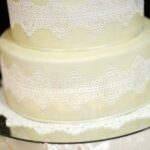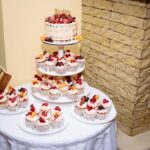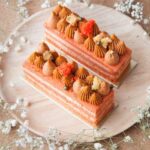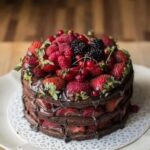Are you wondering how to decorate Easter cake in a unique and beautiful way? Easter is a time for celebration, and what better way to celebrate than with a beautifully decorated cake? In this article, we will explore the rich tradition of Easter cake decorating and provide you with all the essential tools, ingredients, and techniques you need to create a stunning centerpiece for your Easter table.
The Easter cake tradition dates back centuries, with many cultures around the world having their own unique customs and styles of decorating cakes for this special holiday. From intricate icing designs to delicate fondant creations, there are countless ways to incorporate the spirit of Easter into your cake decorations.
Whether you’re a seasoned baker or a novice in the kitchen, this article will guide you through every step of the process, from baking the perfect cake base to adding those final finishing touches.
In the following sections, we will cover everything from essential tools and ingredients for decorating Easter cakes to step-by-step guides on crumb coating and frosting. We’ll also explore creative decorating ideas, using fondant and icing to create stunning decorations, and adding texture and dimension to your masterpiece. Get ready to impress your family and friends with a show-stopping Easter cake that not only looks beautiful but tastes amazing too.
Essential Tools and Ingredients for Decorating Easter Cake
When it comes to decorating an Easter cake, having the right tools and ingredients is essential. One of the most important tools for cake decorating is a turntable, which allows you to easily rotate the cake as you frost and decorate it.
Other essential tools include offset spatulas for smoothing frosting, piping bags and tips for creating designs, and a bench scraper for achieving clean edges. Additionally, investing in good quality food coloring gels can make a big difference in achieving vibrant and beautiful colors for your Easter cake decorations.
In terms of ingredients, a delicious Easter cake starts with a moist and flavorful base. Common ingredients for baking an Easter cake include flour, sugar, eggs, butter, vanilla extract, and baking powder. For the frosting and decorations, ingredients such as powdered sugar, butter or shortening, milk or cream, and flavor extracts are commonly used. Depending on your design ideas, additional ingredients like fondant or gum paste may also be needed.
It’s also important to have a variety of decorative elements on hand when decorating an Easter cake. This can include sprinkles, edible glitter, candy pearls or beads, edible flowers or petals, and chocolate shavings. With the right tools and ingredients at your disposal, you’ll be well-equipped to create a stunning Easter cake that will impress your family and friends.
Preparing the Cake Base
When it comes to decorating an Easter cake, it all starts with a delicious and perfectly baked cake base. Whether you prefer a classic vanilla or chocolate flavor, or something more unique like carrot or lemon, the key is to bake a moist and flavorful cake that will serve as the canvas for your creative decorations.
To begin, gather your ingredients and preheat your oven to the specified temperature in your recipe. Grease and flour your cake pans to ensure that the cake releases easily after baking. Once the batter is mixed, pour it into the prepared pans and smooth out the top with a spatula to ensure an even surface.
The baking time may vary depending on the size and type of cake you are making, so it’s important to keep an eye on it and perform the toothpick test before removing it from the oven. Once baked, allow your cakes to cool completely before assembling and decorating.
Now that we have covered how to prepare the perfect cake base for your Easter creation, let’s move on to the next step – crumb coating and frosting your cake.
Step-by-Step Guide
After baking the perfect Easter cake, the next step in creating a beautifully decorated masterpiece is to crumb coat and frost the cake. This process involves applying a thin layer of frosting to seal in any loose crumbs before adding the final layer of frosting. To start, ensure that you have a smooth and level cake surface to work with.
Begin by placing your baked and cooled cake on a turntable for easy maneuvering. Using a serrated knife, carefully level off any domed top to create an even surface. Next, use a pastry brush or clean kitchen towel to gently remove any loose crumbs from the cake’s surface. Once your cake is prepped, it’s time to crumb coat.
To crumb coat the cake, simply spread a thin layer of frosting over the entire surface of the cake using an offset spatula. The goal here is not perfection but rather to create a smooth base that locks in any loose crumbs. Once the crumb coat is applied, place the cake in the refrigerator for about 15-20 minutes to allow the frosting to set.
After the crumb coat has set, it’s time to add the final layer of frosting. Use your offset spatula again to generously apply frosting all over the cake, working from top to bottom and ensuring even coverage. Smooth out any imperfections on the sides and top as you go along. Now that your cake is beautifully frosted, it’s ready for some creative decorating.
Creative Easter Cake Decorating Ideas
When it comes to decorating Easter cakes, there are countless creative ideas that can elevate your dessert from ordinary to extraordinary. Whether you prefer a soft pastel color palette or want to incorporate intricate floral designs, there are endless possibilities to make your Easter cake a showstopper. Here are some creative Easter cake decorating ideas to inspire you:
- Pastel Perfection: Embrace the traditional soft and delicate colors of Easter by using pastel-hued icing and decorations. Whether you opt for a classic pale yellow, baby blue, soft pink, or mint green, pastel colors can instantly evoke the spirit of Easter and springtime.
- Floral Elegance: Flowers are a quintessential symbol of new life and rebirth, making them the perfect decorative element for an Easter cake. Consider using edible flowers such as daisies, roses, or lavender to add a touch of natural beauty to your confection. You can also create stunning floral designs using buttercream or fondant to elevate the elegance of your cake.
- Whimsical Themes: Get playful with your Easter cake by incorporating whimsical themes such as bunnies, chicks, or decorated eggs. These lighthearted motifs can add charm and personality to your cake, making it a delightful centerpiece for your Easter celebration.
When it comes to decorating an Easter cake with pastels or floral designs – or any other creative idea – the key is to have fun and let your imagination run wild. By experimenting with different techniques and decorations, you can create a unique and beautiful masterpiece that will be the highlight of your Easter gathering.
Using Fondant and Icing to Create Easter Cake Decorations
Decorating Easter cakes with fondant and icing can take your cake to the next level, creating beautiful and intricate designs that are sure to impress your friends and family. Whether you’re a beginner or an experienced cake decorator, using fondant and icing allows for endless possibilities when it comes to decorating your Easter cake.
Working With Fondant
Fondant is a versatile sugar paste that can be rolled out and draped over the cake to create a smooth, flawless finish. To work with fondant, you’ll need a rolling pin, cornstarch or powdered sugar for dusting, and a sharp knife or pizza cutter for trimming.
Start by kneading the fondant until it’s soft and pliable, then roll it out into a thin sheet on a clean, smooth surface. Carefully drape the fondant over the cake and gently smooth it down to eliminate any air bubbles or creases.
Decorating With Icing
Icing can be used to pipe intricate designs, create colorful patterns, and add dimension to your Easter cake. You’ll need piping bags, tips in various shapes and sizes, food coloring gels or powders, and a steady hand to work with icing. Use different piping tips to create swirls, rosettes, flowers, leaves, and other decorative elements. You can also use icing to write messages or add personalized touches to your Easter cake.
Combining Fondant and Icing
For more elaborate designs, consider using both fondant and icing together. Use fondant as the base layer for your cake’s decorations and then use icing to add details such as flowers or intricate patterns. By combining these two techniques, you can create stunning Easter cakes that are not only visually appealing but also delicious.
By mastering the art of working with fondant and icing, you can elevate your Easter cake decorating skills and create show-stopping desserts that will be the highlight of any holiday celebration. So gather your tools and ingredients and let your creativity flow as you decorate an unforgettable Easter cake.
Tips and Tricks for Adding Texture and Dimension to Your Easter Cake
Adding texture and dimension to your Easter cake is a great way to make it stand out as the centerpiece of your holiday spread. Whether you’re using a traditional round cake, a sheet cake, or even cupcakes, there are plenty of creative ways to add visual interest and decorative flair to your dessert.
Texture With Frosting Techniques
One of the simplest ways to add texture to your Easter cake is by using different frosting techniques. Try using a spatula to create swirls and peaks in the frosting for a rustic, homemade look. You can also use piping bags and various tips to create decorative borders, flowers, or other designs with buttercream or royal icing. Experiment with different textures and patterns until you find something that complements your overall design.
Dimension With Layering and Toppers
To add dimension to your Easter cake, consider incorporating layers or adding decorative toppers. For layered cakes, alternate between different flavors or colors of cake and frosting for a visually stunning effect when sliced. You can also use edible decorations such as chocolate eggs, sugar flowers, or themed figurines on top of the cake to create height and interest.
Using Edible Paints and Sprinkles
Another fun way to add texture and dimension to your Easter cake is by using edible paints or sprinkles. Edible luster dusts, food color sprays, or even simple watercolor-style painting techniques can be used to create unique patterns and designs on the surface of the cake. Additionally, sprinkle mixes in pastel colors or metallic shades can be used to add both texture and shine to your dessert creation.
By incorporating these tips and tricks for adding texture and dimension to your Easter cake, you’ll be able to take your decorating skills to the next level and impress your friends and family with a beautifully detailed dessert that perfectly captures the spirit of the holiday.
Finishing Touches
For the final step in decorating your Easter cake, adding edible decorations and garnishes is a fun and creative way to add some extra flair to your dessert. There are endless possibilities when it comes to decorating with edible items, from fresh fruit to chocolate shavings to candy eggs and more. This section will explore some unique and beautiful ways to add those finishing touches to your Easter cake.
One popular option for adding edible decorations to a cake is using fresh fruit. Berries such as strawberries, raspberries, blueberries, or blackberries can be strategically placed on top of the cake for a burst of color and a fresh, fruity flavor. Slices of kiwi or mandarin oranges can also make beautiful and eye-catching decorations. Not only do these fruits add visual appeal to the cake, but they also provide a delicious contrast of flavors that will delight your guests.
Another option for adding edible decorations to your Easter cake is to use chocolate. Chocolate shavings or curls can be sprinkled over the top of the cake for an elegant and decadent touch. You can also use chocolate molds to create decorative shapes such as bunnies, eggs, or flowers out of colored chocolate. These can be placed around the sides or on top of the cake for a whimsical and festive look.
Finally, consider using candy eggs or other seasonal treats as edible garnishes for your Easter cake. Pastel-colored candy eggs can be nestled into the frosting for a playful and sweet surprise when the cake is sliced. Other options include marshmallow chicks, jelly beans, or even edible flowers such as pansies or violets. These additions not only add visual interest to the cake but also provide a delightful treat for everyone who enjoys it.
By taking these ideas into account you’ll surely impress anyone with how well you know how to decorate easter cakes.
Conclusion
In conclusion, decorating an Easter cake is a wonderful way to add a touch of creativity and festivity to your holiday celebrations. Whether you’re a seasoned baker or just starting out, there are endless possibilities for expressing the joy of Easter through colorful and beautifully adorned cakes. From pastel colors and floral designs to intricate fondant creations, the options for decorating your Easter cake are truly limitless.
By following the essential tools and ingredients for decorating an Easter cake, as well as mastering the techniques for crumb coating, frosting, and adding texture and dimension, you can create a stunning centerpiece for your Easter dessert table. With some practice and creativity, you can easily learn how to decorate an Easter cake that will impress your family and friends.
As you prepare to celebrate Easter with loved ones, consider incorporating edible decorations and garnishes like chocolate eggs, mini marshmallows, or fresh flowers to add the finishing touches to your beautifully decorated cake. Whether you choose to follow traditional designs or let your imagination run wild, decorating an Easter cake is a delightful way to spread the joy of this special holiday.
So gather your essential tools and ingredients, get ready to bake the perfect cake base, and let your creativity shine as you adorn your Easter cake with love and festive charm.
Frequently Asked Questions
How to Decorate an Easter Basket Cake?
To decorate an Easter basket cake, start by baking and cooling your cake. Then, frost the cake with green tinted frosting for grass and add shredded coconut for texture. Next, place candy eggs and chocolate bunnies to create a “basket” effect. Finally, use piped frosting to create a handle for the Easter basket.
How Do You Shape a Cake Like an Easter Egg?
Shaping a cake like an Easter egg involves baking two round cakes of different sizes. Once cooled, stack them on top of each other and carve them into an egg shape using a serrated knife. Then, crumb coat the cake with frosting, let it set, and then add a final layer of frosting for a smooth finish.
What Cake Is Traditionally Eaten at Easter?
The cake traditionally eaten at Easter is the Simnel Cake. It is a light fruitcake with a layer of marzipan in the middle and another layer on top that is toasted to give it its characteristic golden color. The cake is often decorated with eleven marzipan balls representing the apostles minus Judas.

Welcome to my blog about home and family. This blog is a place where I will share my thoughts, ideas, and experiences related to these important topics. I am a stay-at-home mom with two young children. I hope you enjoy reading it! and may find some helpful tips and ideas that will make your home and family life even better!





